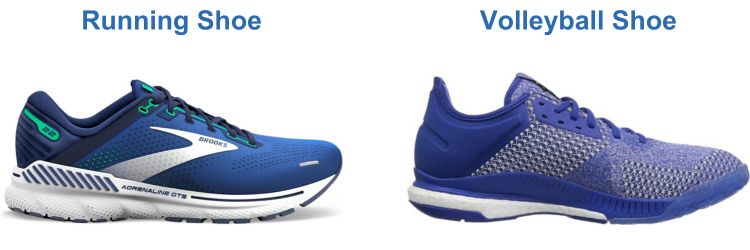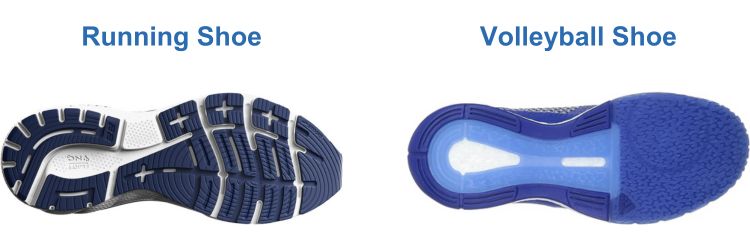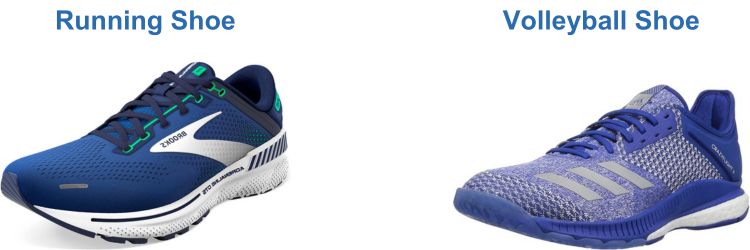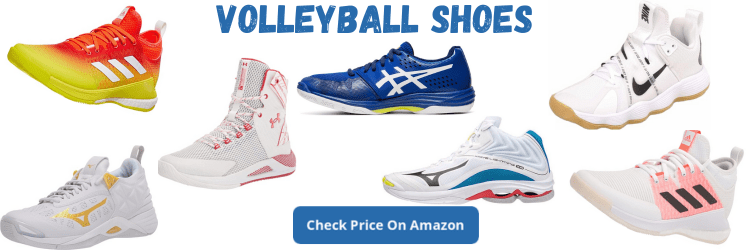Are Running Shoes Good for Volleyball?
Choosing the right footwear is crucial for any sport, impacting performance and minimizing the risk of injury. While running shoes are designed to provide comfort and support for forward motion, their suitability for sports like volleyball, which involve dynamic lateral movements, is often questioned.
Let’s look at the factors that differentiate running shoes from volleyball shoes and examine whether running shoes are indeed good for volleyball, or if specialized footwear is necessary for optimal performance and injury prevention.
Understanding the Differences
Design and Construction
Running shoes are engineered to facilitate heel to toe transitions, emphasizing cushioning and shock absorption to minimize impact on the feet and joints during repetitive forward movements. They typically have thicker midsoles and cushioned heel regions to provide comfort and reduce strain on the feet.
In contrast, volleyball shoes are specifically tailored to meet the demands of the sport. They prioritize lateral stability, ankle support and traction to facilitate quick multidirectional movements on the court. Volleyball shoes feature low profile designs with gum rubber outsoles optimized for grip on indoor surfaces, ensuring players can pivot, slide and change direction swiftly without slipping.

Sole Construction
The outsoles of running shoes often have treads designed for forward propulsion, offering minimal traction laterally. While this design is suitable for running on even surfaces like roads or tracks, it may not provide adequate grip on the hardwood floors commonly found in volleyball courts.
Volleyball shoes, on the other hand, feature specialized outsoles with herringbone or wave patterns that enhance traction and grip during lateral movements. These patterns are strategically designed to provide stability and prevent slippage, crucial for maintaining balance and agility during rapid changes in direction characteristic of volleyball gameplay.

Support and Stability
Running shoes prioritize cushioning and shock absorption to reduce impact on the feet, but they often lack the lateral support necessary for sports involving frequent side to side movements like volleyball. The cushioning materials in running shoes may compress excessively during lateral maneuvers, compromising stability and increasing the risk of ankle injuries.
Volleyball shoes are engineered to offer superior lateral support and stability, featuring reinforced midfoot and ankle support structures. These elements help stabilize the foot and ankle during sudden movements, reducing the likelihood of sprains and twists commonly associated with the dynamic nature of volleyball.

Performance and Injury Considerations
Impact on Performance
While running shoes may offer adequate cushioning for comfort during volleyball play, their lack of lateral support and traction can hinder performance. Volleyball requires rapid changes in direction, explosive jumps and precise footwork, all of which are optimized by the design features of specialized volleyball shoes.
Using running shoes for volleyball may result in compromised agility, reduced traction and diminished stability, ultimately affecting a player’s ability to move efficiently and execute maneuvers effectively on the court. This can impact overall performance and potentially put the player at a disadvantage against opponents wearing proper volleyball footwear.
Risk of Injury
Wearing running shoes for volleyball can increase the risk of certain types of injuries due to their inadequate support and traction for lateral movements. Ankle sprains, one of the most common volleyball injuries, may occur more frequently when using running shoes, as they do not provide the necessary ankle support to withstand sudden shifts in direction or landings from jumps.
Additionally, the lack of proper traction on running shoe outsoles increases the likelihood of slipping or losing balance during lateral movements, increasing the risk of falls and subsequent injuries. The absence of specialized features such as reinforced toe caps or lateral stability technologies further exposes players to potential foot and ankle injuries.
Conclusion
While running shoes are well suited for their intended purpose of cushioning and supporting forward motion, they are not optimal for sports like volleyball that demand rapid lateral movements, agility and traction on indoor court surfaces. Volleyball shoes are specifically designed to meet these requirements, offering superior stability, support and traction essential for peak performance and injury prevention.
Players serious about their volleyball performance and safety should invest in proper volleyball footwear tailored to the demands of the sport. By choosing the right shoes designed specifically for volleyball, athletes can optimize their agility, stability and comfort on the court, enhancing their overall playing experience and reducing the risk of injury.


